Is Minecraft safe for kids? A parents guide
With over 200 million active monthly players, Minecraft is one of the highest-grossing video games ever made. But is Minecraft safe for kids? Read on to learn our top safety tips for kids on Minecraft. Then get Norton Family to help ensure your kids’ online safety, without interrupting their free time.
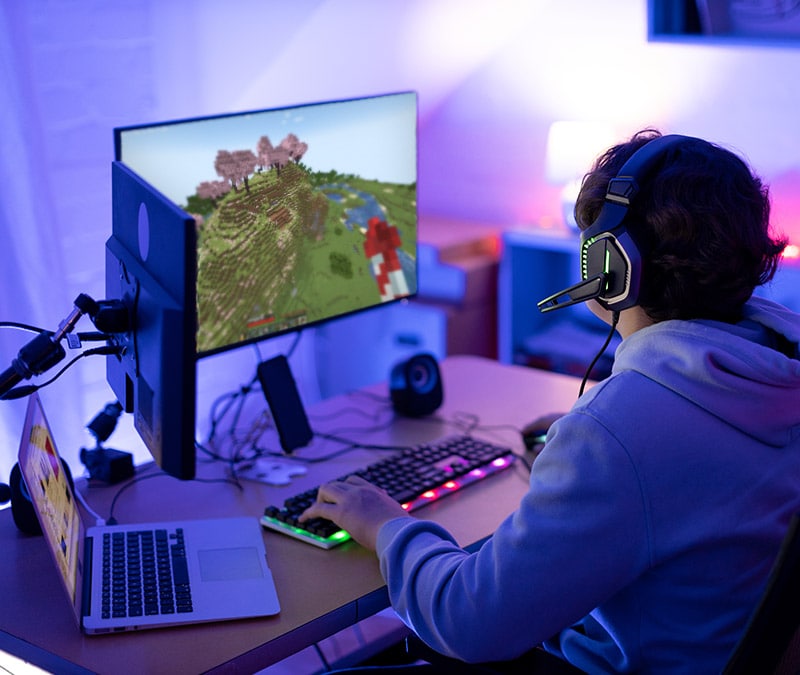
Since its launch in 2009, Minecraft remains a favorite among kids, thanks to its widespread availability across desktop, mobile, and console platforms, plus an attractive one-time fee of around $7 to $30, depending on the device and region. However, without oversight, kids’ safety on Minecraft isn’t guaranteed.
In our Minecraft parents’ guide, we’ll give you tips and tricks to help your kids choose safe servers for their age, limit their free access to chats with strangers, and stay generally safer during their building sessions.
What is Minecraft and what do parents need to know?
Minecraft is a creative crafting game with an optional survival element. In its pixelated world, players can either colonize the wilderness by building structures and making weapons, or go into creative mode to skip gathering materials and focus on designing (and building) cool structures.
Many parents like Minecraft because it encourages kids to use their creativity to imagine, design, and build things, even if virtually.
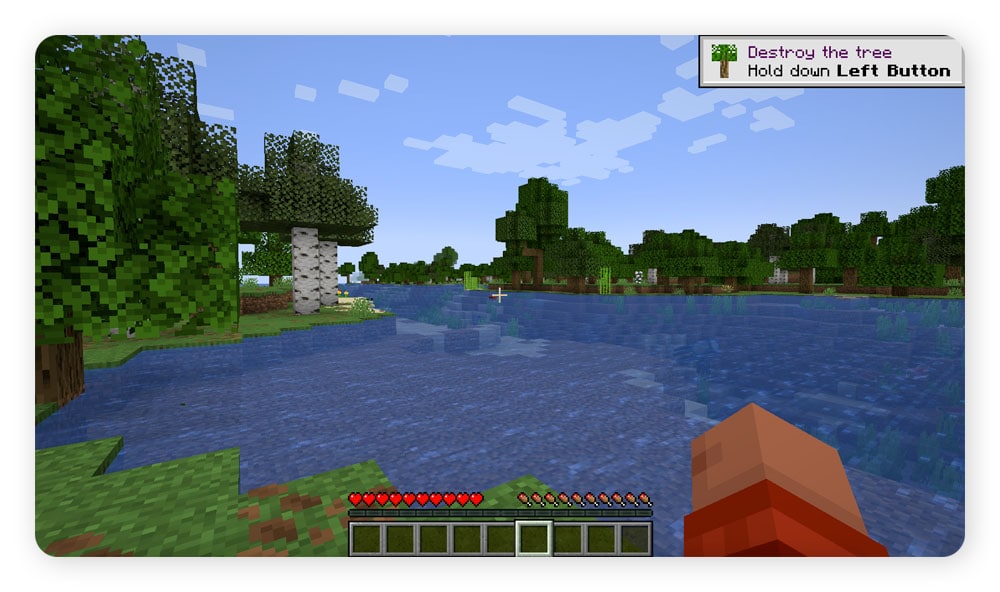

Like many online games, Minecraft has both single-player and multiplayer modes. In multiplayer mode, players participate in mini-games with other users. One popular mini-game, called “Bed Wars,” is a capture-the-flag-style game, where users aim to destroy other players’ beds while keeping their own safe from destruction.
There’s also a marketplace where players can access user-generated content, similar to Roblox. Here, players can find and use custom “skins” to personalize their in-game appearance, as well as mini-games and themed worlds created by other users.
Interestingly, Minecraft also offers an educational version called Minecraft Education. This edition includes interactive learning activities, coding exercises, and a multiplayer mode that supports up to 30 students at once. Today, teachers frequently use Minecraft Education as a trusted and safe tool to engage students and enrich classroom learning.
The company that makes Minecraft, Mojang, has made a clear commitment to player safety. As part of its commitment, both AI and human agents moderate servers, helping to keep content appropriate for players of all ages.
What is Minecraft’s age rating?
The ESRB (Entertainment Software Rating Board), the rating body for all video games in the United States, gives Minecraft an age rating of E10+, which means it’s suitable for everyone over ten years old. PEGI (Pan-European Game Information) gives Minecraft an age rating of 7+. And as long as kids stick to offline play, 7+ is generally accepted by most parents on both sides of the Atlantic.
Here’s an overview of how official game rating systems worldwide age-rate Minecraft:
Rating System |
Age rating |
Age rating, explained |
|---|---|---|
ESRB (US) |
E10+ |
Appropriate for ages 10+ |
PEGI (Europe) |
7 |
Appropriate for ages 7+ |
CERO (Japan) |
A |
Appropriate for all ages |
USK (Germany) |
6 |
Appropriate for ages 6+ |
It’s important to note that Minecraft’s multiplayer experience cannot be fully rated, because Minecraft has no control over direct player-to-player interactions. Thankfully, you can control multiplayer access and communications through parental controls.
What are the risks of playing Minecraft?
Minecraft is generally considered a safe game to play. The main risks come from its multiplayer and online chat features, which are common video game security concerns for many titles. Additionally, the Minecraft marketplace can sometimes include blood or mature themes, whereas offline gameplay is typically more kid-friendly.
Here are the main Minecraft risks that parents should be aware of:
- Unmonitored chat and private servers: Minecraft’s online chat is probably its most serious risk factor, as it could open the door to cyberstalking, doxxing, or even online predators that may be lurking in private servers.
- Inappropriate marketplace content: Because many modification packages available on the marketplace are user-created, they can sometimes include inappropriate content.
- Online purchases: Kids may be tempted to make marketplace purchases on their own. In 2024, EU policymakers were urged to crack down on Minecraft's in-game spending practices, due to misleading young players into spending money.
- Mild violence: In survival mode, Minecraft includes cartoonish violence, which may be frightening to or negatively impact children.
- Cyberbullying: In multiplayer mode, cyberbullying, particularly targeted toward younger players, may be an issue.
- Addiction: Minecraft is a fun, open world that makes it challenging for children to establish a good stopping point. The excessive play has led to lawsuits against game developers for failing to warn users of the risks of game addiction.
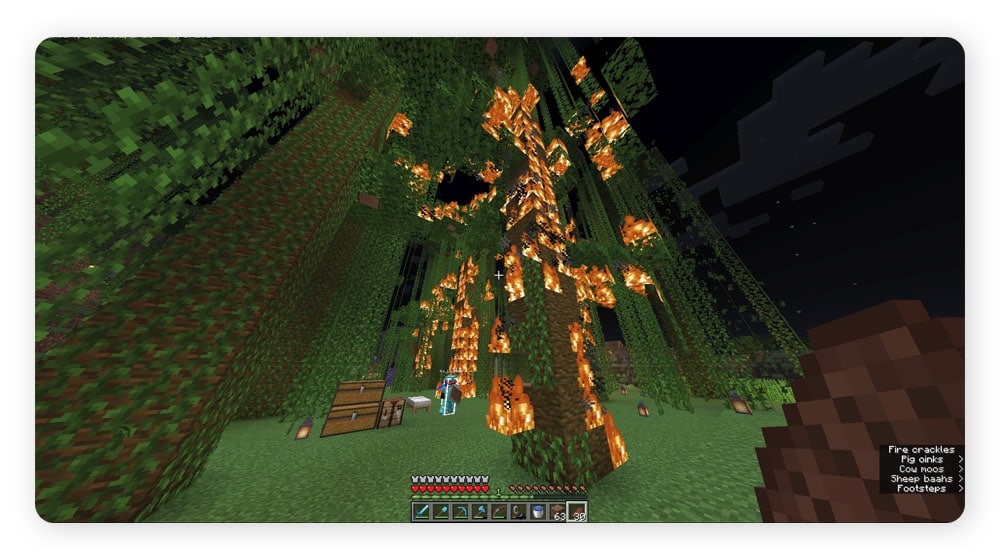

Fortunately, Minecraft players of all ages can be protected by limiting the game’s multiplayer access and online chat features. Parents should also review any downloadable content and check if their child has made marketplace purchases. And using Norton parental controls can help limit screen time and support safer online experiences for your child.
How to set up Minecraft parental controls
As with most parental controls, Minecraft parental controls are easy to set up. In fact, Minecraft automatically issues a child account to anyone under the age of 16 to help ensure that kids stay safer on game servers. With a free Microsoft Family account, you can manage the Minecraft experience for each of your children.
To set up parental controls for Minecraft:
- Sign in to your Microsoft Family Safety account.
- Select the child account that you want to edit on the family dashboard.
- Select Content restrictions and open the Online Safety tab. From there:
- Select You can join multiplayer games settings and choose the appropriate option to enable or block your child’s ability to join multiplayer games.
- Select You can create and join clubs and manage your preferences to enable or block your child’s ability to join clubs or realms.
- Select You can add friends to enable or block your child’s ability to add and remove friends.
4. Next, switch to the Privacy tab. From there:
- Select Others can communicate with voice, text, or invites, and enable or block the chat function — choose Friends only to ensure your child can only communicate with friends.
For a simple way to manage your child’s online activity beyond Minecraft, try Norton Family — a suite of tools that provides insights into what your kids are doing online. It helps protect them from inappropriate or harmful content, keeps them focused on important tasks, and encourages healthier online habits.
Tips for keeping your kids safe on Minecraft
To help keep your kids safe on Minecraft, start by following good general internet safety practices. Then, take these simple steps to ensure your children enjoy an age-appropriate Minecraft experience:
- Monitor in-game communications or consider turning off live chat features.
- Limit private server access to help avoid contact with strangers.
- Review desired marketplace purchases and don’t save payment card information in the game.
- Limit gaming time and teach kids good general online habits.
Safe Minecraft games for kids
Minecraft contains many mini-games and user-generated content options that are child-appropriate. For instance, educational Minecraft games teach kids about everything from computer science to biology. Parents can also choose Minecraft servers that have strict age-appropriate policies.
The following Minecraft games and settings are safe for children of all ages:
- Base game: This is the open-ended block world, where kids can explore, design, and build their own structures.
- Self-hosted private servers: Meaning, worlds that your child creates themselves, or private servers created by known and trusted friends.
- Educational Minecraft: A place for curriculum-aligned lessons, STEM experiences, and other learning-focused environments.
- Reputable online servers: Widely-used servers, such as Hypixel or Mineplex, that host family-friendly mini-games are generally safe. However, any public server may increase exposure to Minecraft risks.
- Local multiplayer games: Games that are private to your own Wi-Fi network are safe for kids.
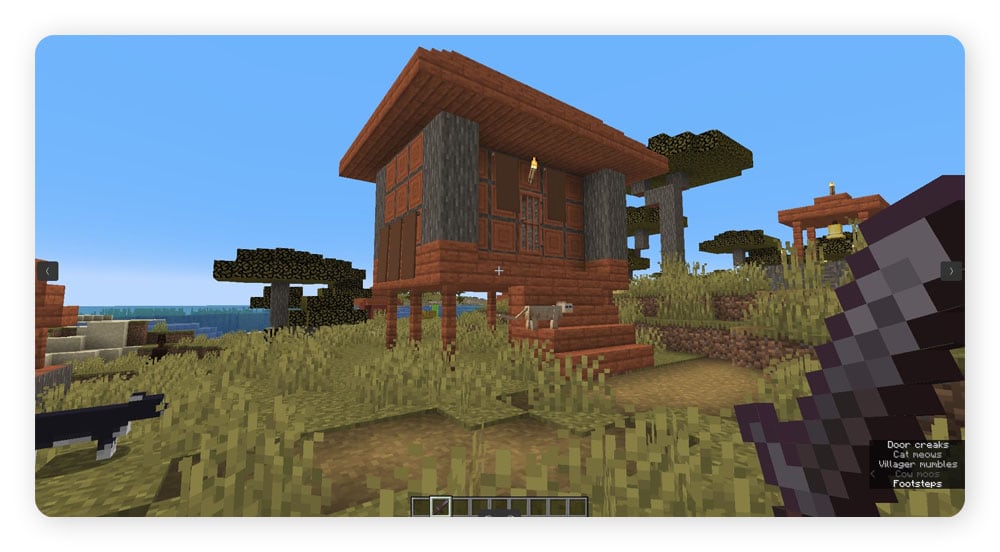

Limiting online communication is crucial for some children. To see if your child is mature enough to chat responsibly on Minecraft, have honest conversations with them beforehand about the risks kids face online.
Keep your kids safer while gaming
Online gaming presents a world of fun and learning, but also potential risks. Norton Family offers tools to help manage and monitor your child's online activities, setting boundaries for a safer online experience. From supervising time spent on devices to filtering inappropriate content, Norton Family is here to assist you.
FAQs
What are the different versions of Minecraft?
There are several different versions of Minecraft, including Minecraft Java, Minecraft Education, Minecraft Bedrock, and Minecraft: PI Edition.
Is Minecraft addictive?
Some people may find it hard to stop playing Minecraft, as the open-world environment lacks clear stopping points. Unlike finishing a book chapter or completing a level, Minecraft’s gameplay could theoretically continue indefinitely.
Does Minecraft have a safe version?
Yes. By sticking to base mode or disabling the online chat feature, parents can ensure a safe, creative virtual play experience for their children.
What’s the safest server on Minecraft?
The safest Minecraft server is a private, self-hosted server that you can set up to enable local multiplayer mode on your own Wi-Fi network. If you want to provide a more robust multiplayer experience, The Sandlot is a popular server set up by a parent to deliver family-fun play.
Minecraft is a trademark of the Microsoft Corporation.
Editorial note: Our articles provide educational information for you. Our offerings may not cover or protect against every type of crime, fraud, or threat we write about. Our goal is to increase awareness about Cyber Safety. Please review complete Terms during enrollment or setup. Remember that no one can prevent all identity theft or cybercrime, and that LifeLock does not monitor all transactions at all businesses. The Norton and LifeLock brands are part of Gen Digital Inc.

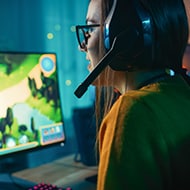
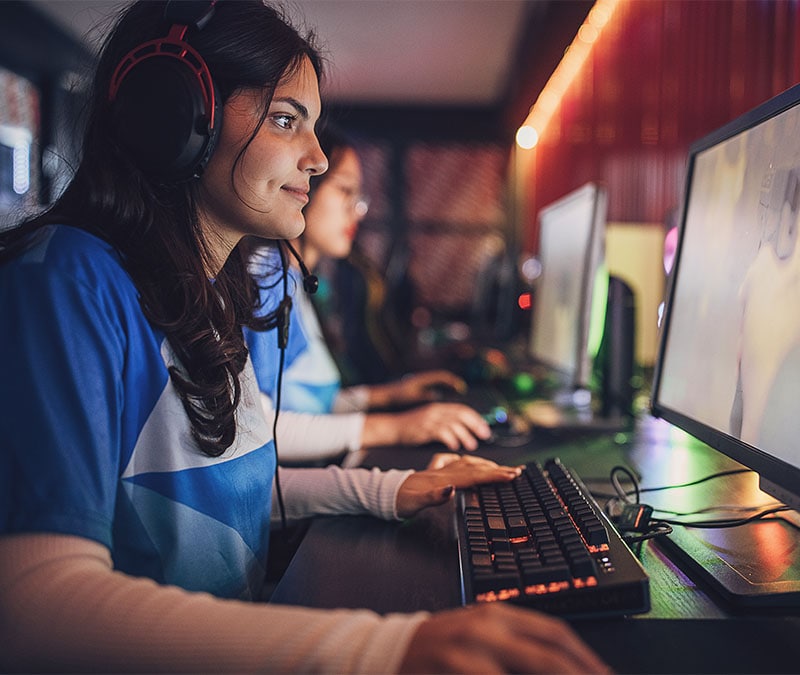
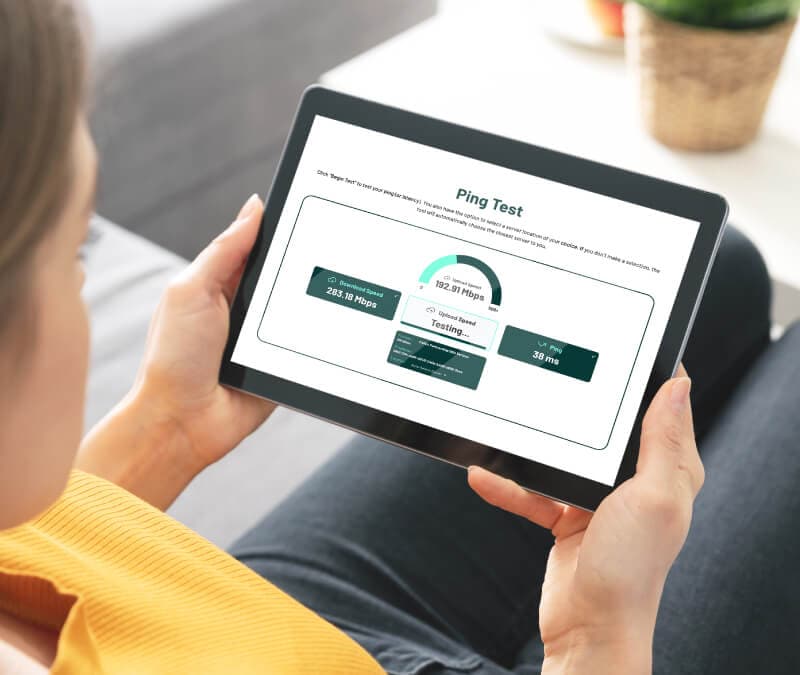

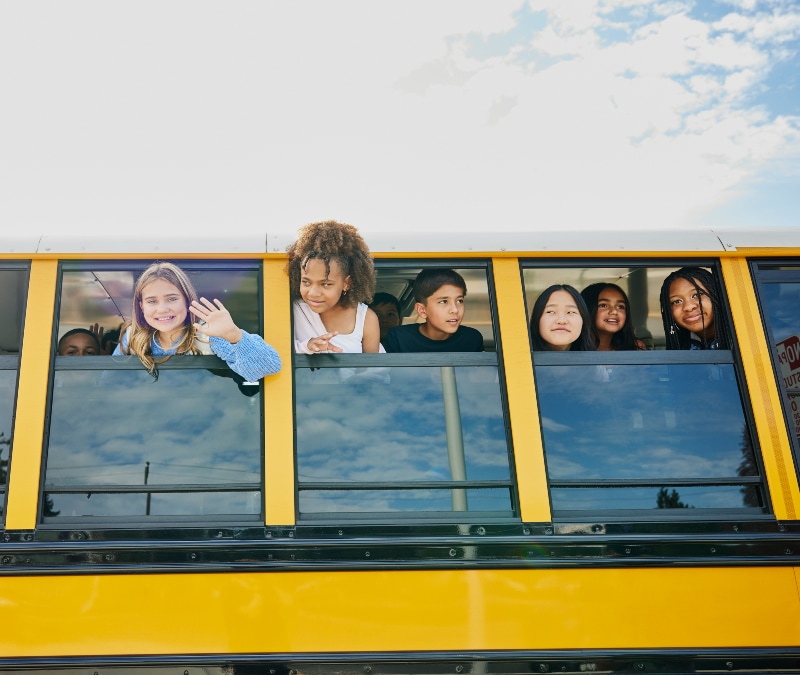

Want more?
Follow us for all the latest news, tips, and updates.